Have you ever seen a train roll by on the tracks and wondered, “how does a train work?” Well, the secret ends in the train’s wheels, so where does it start? Let’s dive into this to understand the working of trains
Very Simply. Trains work by generating power down to their wheels, using electricity, diesel, a combination of both, and even steam. The wheels on the sides of the train are connected with a metal rod that helps it move forward, they are designed strategically so the train can stay on the track around corners. Pulling the train is the locomotive, the group of locomotive and cars is referred to as a locomotive consist.
Let’s go further into the subject…
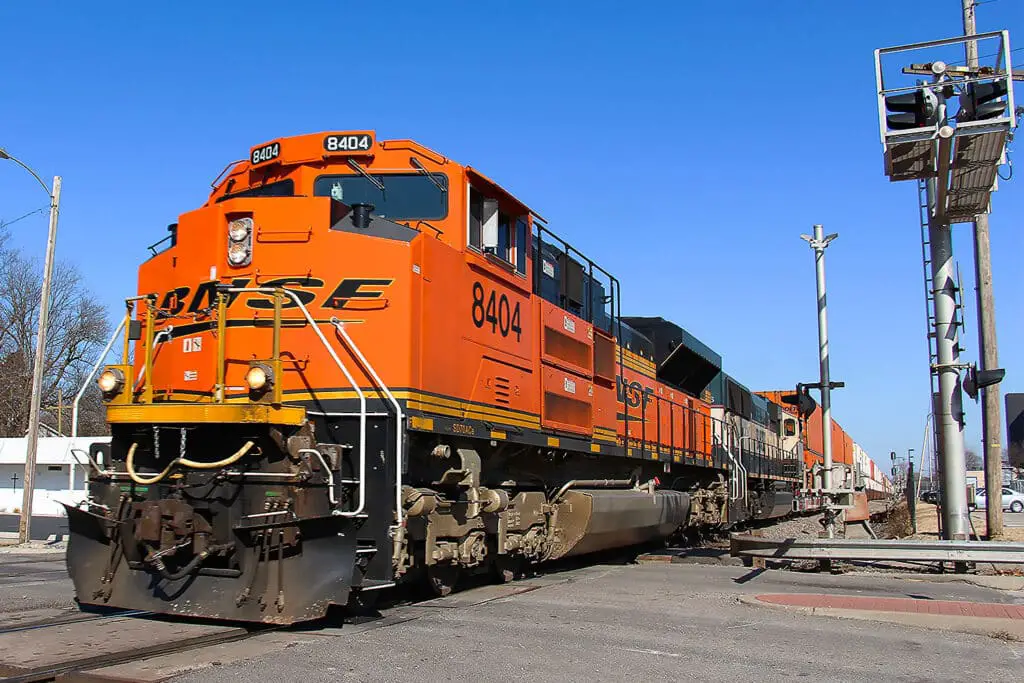
A Brief History of Trains Worldwide
Before I explain how a train works, you need to know a little about how it all started…
Railways have been known to exist since 1550 in Germany. Well not railways we know today, but the early revolution of them. It all started with wooden rails, called wagonways, which were used for transportation. The wooden rails were made for moving carts and horse-drawn wagons along dirt roads easier.
The wooden rails were then replaced by iron rails in the late 1700s. Throughout Europe, the wheels evolved as tramways became popular. Until steam-powered locomotives were introduced in the early 1800s, horses were used to provide “horsepower” for the cargo.
When the locomotive came into play, the first one originated in Great Britain in 1804. These locomotives first pulled wagons that were full of coal. After some time, the steam-powered locomotives were engineered so they could easily accommodate passengers too.
Combustible materials, including oil, coal, and wood, provided fuel to the steam-powered locomotive. The train went forward when the generated steam moved different pieces of machinery.
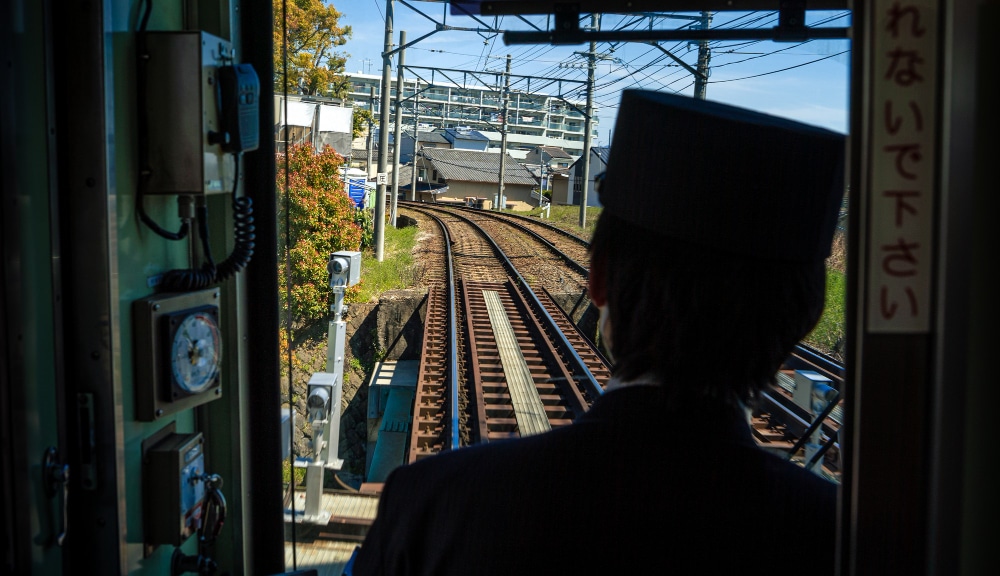
A Brief History of Trains In The U.S
Americans are known to have been using railroads since the 1820s. After some years, America started its locomotive manufacturing industry. In the 1830s, America started producing its own locomotives.
Since cars or airplanes hadn’t been invented yet, trains were quite popular among American citizens. During the 1880s to 1920s, trains were the main mode of transportation in America. This period was called “The Golden Age” of railroads.
The first U.S. railway was the Baltimore & Ohio Railroad, which transported commercial freight and passengers on February 28, 1827. Many people thought the steam engine might not work efficiently along winding grades or steep hills. But the Tom Thumb Steam Engine proved everyone wrong. The first railroad track opened in 1830 and was only 13 miles long.
Ok, so how does a train work, know you know your basic train & railroad history, I’ll explain to you.
How Does a Train Work – Locomotive Types
When you are asking, how does a train work, I will assume you are talking about the locomotive, the engine of the “train”…
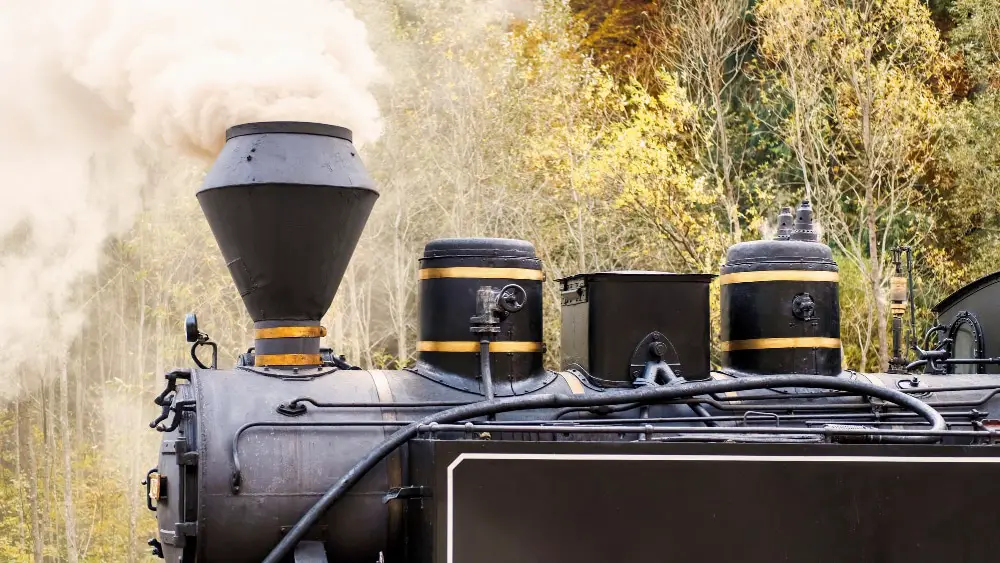
There have been many types of locomotives over the years, but here are the three most popular and a summary of how they work:
How Does a Steam Locomotive Work
A steam locomotive, steam engine or as many refer to them as, a steam train, you guessed it, is powered by steam. The locomotive has a huge, strong boiler on board full of water. This boiler is heated by burning coal, wood or sometimes even oil to create the steam. The steam then moves the pistons, which are attached to the main wheels to create movement and pull the cars along.
Now, if you haven’t ever had the joy of riding on a steam locomotive, check out the top 5 steam train rides in the U.S.
How Does An Electric Locomotive Work
An electric locomotive runs on electricity from overhead wires, there is no power generation onboard. An electric locomotive draws the power from overhead and converts the electrical energy into mechanical energy through a circuit breaker, then through a transformer before sending it onto the wheels to make them spin.
The electric engine is much lighter, produces less heat, and makes less noise than a steam or diesel engine. Not to mention this is the fastest of engines!
How Does a Diesel Locomotive Work
The diesel locomotive you see today, whether it is Amtrak or Union Pacific is actually a Diesel Electric Locomotive. To clarify, these locomotives do use diesel, but the diesel then powers electric motors called traction motors which when power the wheels. Benefits of a diesel-electric engine include cheaper upfront costs & reliability.
Type of Trains
Ok, we have discussed the history of trains & their engines to give you an idea of how a train works, I thought I would run through the different styles of trains.

Passenger Trains
Very simply passenger trains are designed to accommodate passengers & move them quickly & efficiently from one location to another.
Passenger trains have superior track occupancy over other trains because they generally have a fixed, busy schedule. This type of train includes short-distance, long-distance, and intercity.
I will happily admit, even though passenger trains are meant to take priority. Freight trains do block the way often.
Long-Distance Trains
The trains designed to run between different cities of a country ( or between countries) are called long-distance trains. Since this style of train transports people to a greater distance, they generally offer dining cars where passengers can enjoy their meal during the journey.
The long-distance trains designed for traveling overnight also come with sleeping cars where passengers can sleep. Many people choose long-distance train travel over flights ( I definitely do!) as the price is cheaper, there is often great scenery & you don’t have to go to a busy airport!
High-Speed Rail
A popular long-distance train type is a high-speed rail designed to help passengers travel long distances quickly. Want to know how fast can a train go? High-speed trains can go up to 267mph! (and even faster in testing. The specially designed tracks help the high-speed train cover such a great distance without minimal safety risk. Traveling on high-speed rail can save you a great deal of time.
Japan’s Shinkansen was the first high-speed passenger train that successfully ran on the tracks. As this train was so fast, it was also called the bullet train.
In the U.S, people often ask me how fast do Amtrak trains go? My response, is not fast enough! Anyway, I won’t get into this here 🙂
Inter-City Trains
The long-distance trains used to connect metropolitan areas are called inter-city trains. These trains move at a higher speed and cover more distance. Many inter-city long-distance passenger trains also come with dining and sleeping cars too.
Regional Trains
Regional trains are different from inter-city trains as they are likely to make stops over shorter distances. This train is designed to connect stations of nearby cities. These trains operate in urban and rural regions of the country. Regional trains cover long distances and connect different regions.
Short-Distance Trains
Unlike long-distance trains, short-distance trains are ideal for people who want to travel shorter distances in a cheaper way. This train can occupy many passengers and have enough space inside so the passengers can also travel whilst standing.
Short-distance trains help in the mass transport of people over shorter distances. Compared to cars, these trains are more affordable and environmentally friendly.

Commuter Trains
The goal of commuter trains is to connect the city’s center with suburban areas. People usually board this train to go to and from work.
Within City Trains
There is a need for trains that can facilitate the transfer of passengers across the city. Below are some common “within city trains.”
Rapid Transit Trains
Rapid transit trains are the metro system often called the subway, underground rails, or tubes. These trains run using electricity through a unique third rail.
The railroads for rapid transit trains are different from the usual road. These trains run either in the underground tunnel or on elevated overhead structures.

Tram
Trams are another popular city train that allows pocket-friendly transfers. In fact, there is a distinction between tramways and railways in the U.K. Similarly, the U.S. and Canada also have trams, which are referred to as trolleys or streetcars.
Unlike traditional trains, trams run on the public streets with separate paths.
Light Rail
The modern trams with separate paths like heavy-line railways are called light rails. This rail is considered a combination of traditional train and tram.
Light rail is known to have level crossings protected with crossing gates. Deprived areas and underdeveloped sites are often connected with the main cities through abandoned heavy rail & modern light rail is commonly used as an alternative.
Monorail
A railway system with a single beam of rail is called a monorail. These run on elevated rail tracks and were designed to solve excess traffic in the urban areas. The monorails are created with linear induction motors.
Maglev
Have you ever seen a train without wheels? Well, such a train exists. This train floats above and glides smoothly without touching a rail instead of rolling along the track. The train travels smoothly from the origin to the destination without coming in contact with the rail. These are called maglev trains (Magnetic Levitation) and I have written an article about how a maglev train works here.
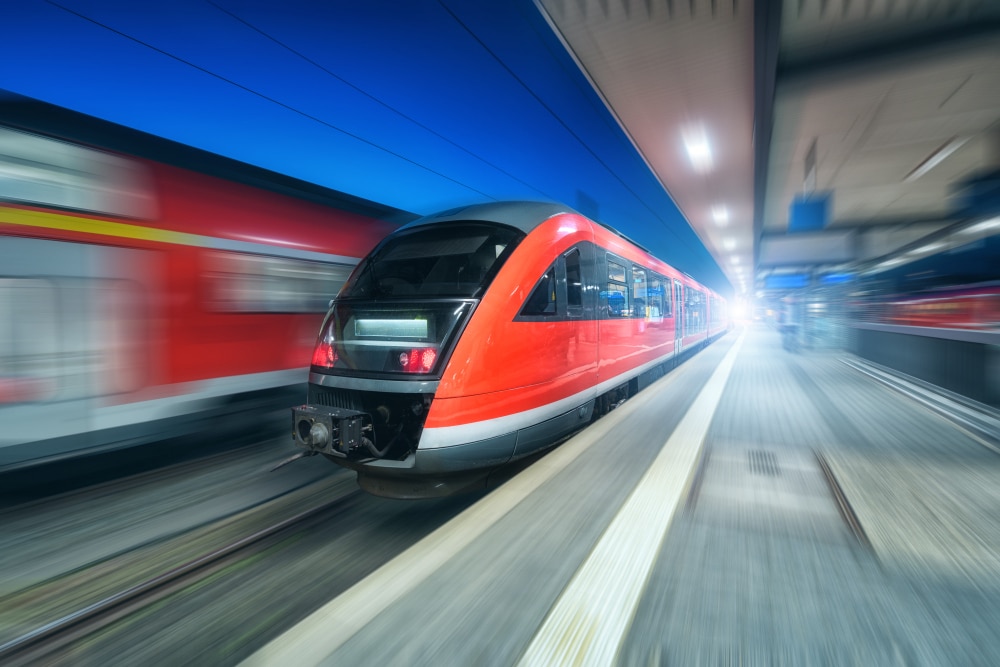
Railcar
A railway transportation system that can haul train carriages is called a railcar. It’s a self-propelled system, often referred to as a single car or carriage. Both the ends of the railcar have a driver’s cabin. A railcar is referred to as railmotor coaches or motor cars in the technical rail usage.
Freight Trains
The last train is used for transporting goods or cargo. Freight trains are not ideal for passengers, and industries essentially use them. Freight trains are the backbone of many nations, they are the workhorses of the transportation system in my eyes.
That’s because transporting goods using trains is affordable. Also, it’s an energy-efficient option compared to cars and trucks. Even though passenger trains are meant to have priority on the tracks, freight trains that muscle their way in are responsible for delays and how fast an Amtrak train can go.
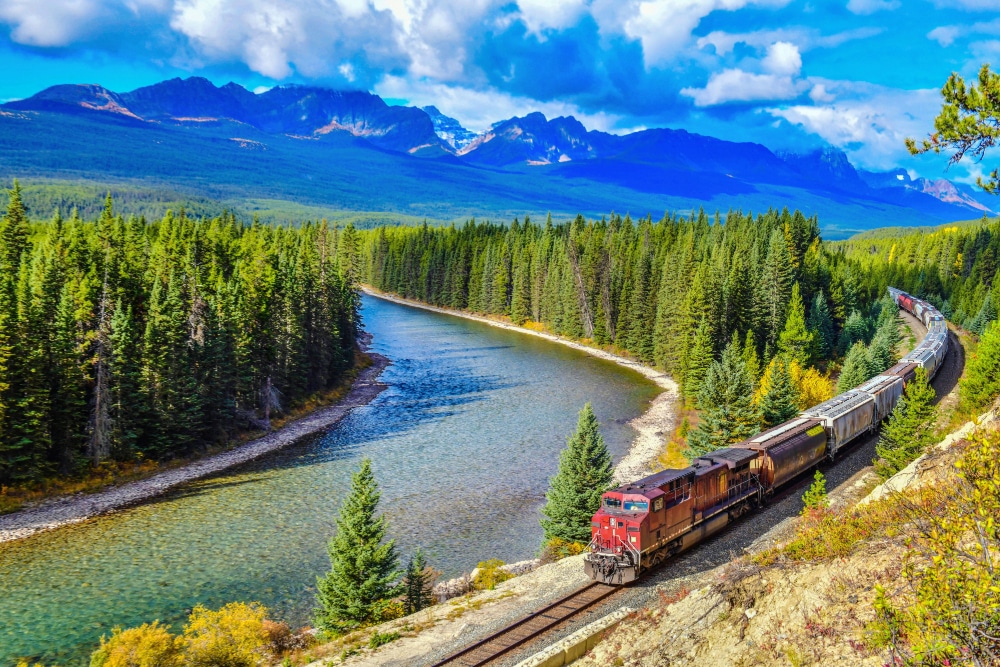
Conclusion
The train is an integral part of our transportation system that connects different areas together near and far, delivering both people and freight. I hope you understand better the answer the question How does a train work? and also have a brief overview of the industry it’s history and it’s variables.
Do you know how fast trains can go in the United States? Read here.
Safe Travelling.
